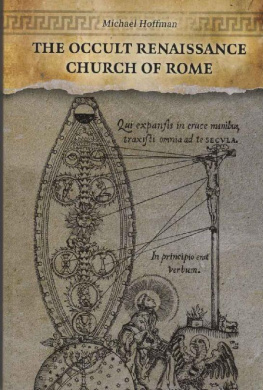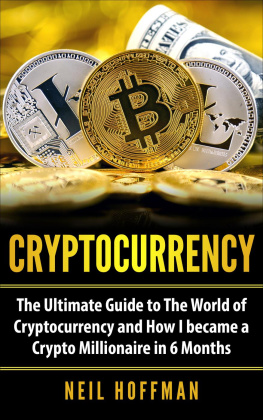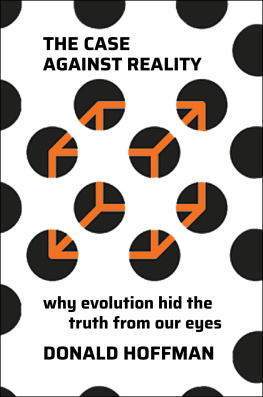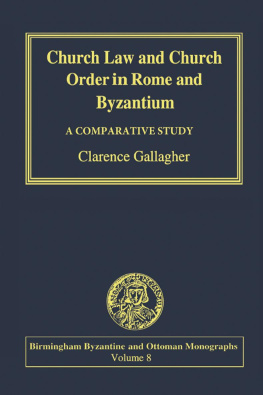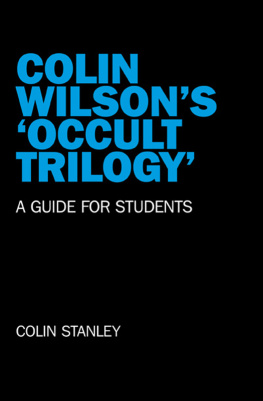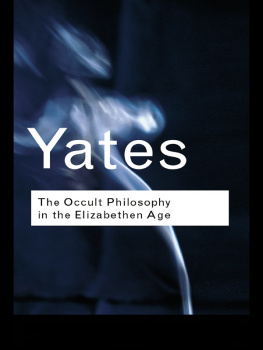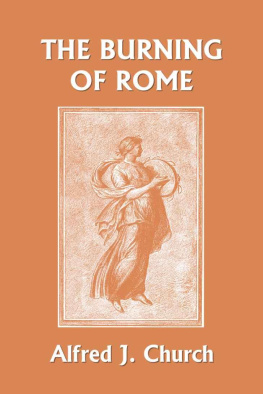Hoffman - The Occult Renaissance Church of Rome
Here you can read online Hoffman - The Occult Renaissance Church of Rome full text of the book (entire story) in english for free. Download pdf and epub, get meaning, cover and reviews about this ebook. City: Coeur dAlene, year: 2017;2019, publisher: Independent History and Research, genre: Religion. Description of the work, (preface) as well as reviews are available. Best literature library LitArk.com created for fans of good reading and offers a wide selection of genres:
Romance novel
Science fiction
Adventure
Detective
Science
History
Home and family
Prose
Art
Politics
Computer
Non-fiction
Religion
Business
Children
Humor
Choose a favorite category and find really read worthwhile books. Enjoy immersion in the world of imagination, feel the emotions of the characters or learn something new for yourself, make an fascinating discovery.
The Occult Renaissance Church of Rome: summary, description and annotation
We offer to read an annotation, description, summary or preface (depends on what the author of the book "The Occult Renaissance Church of Rome" wrote himself). If you haven't found the necessary information about the book — write in the comments, we will try to find it.
The Occult Renaissance Church of Rome — read online for free the complete book (whole text) full work
Below is the text of the book, divided by pages. System saving the place of the last page read, allows you to conveniently read the book "The Occult Renaissance Church of Rome" online for free, without having to search again every time where you left off. Put a bookmark, and you can go to the page where you finished reading at any time.
Font size:
Interval:
Bookmark:
The Occult Renaissance
Church of Rome
Michael Hoffman

Independent History and Research
Coeur dAlene Idaho
THE OCCULT RENAISSANCE CHURCH OF ROME
Copyright 2017 by Michael Hoffman. All rights reserved.
With the exception of excerpts in reviews and fair use in compliance with the Copyright Law of the United States, reproduction of this work on the Internet, or in any other medium by any form of reproduction, whether digital, audio, or print, is a violation of Title 17 of the Copyright Law of the United States, and subject to criminal and civil penalties. It is a Federal crime to scan the contents of this book onto the Internet.
Printed in the United States of America
First Edition
ISBN: 978-0-9909547-2-9
Independent History and Research, Post Office Box 849, Coeur dAlene, Idaho 83816
RevisionistHistory.org
TABLE OF CONTENTS
Louis-Ferdinand Cline
Since the Renaissance theres been a tendency to work more and more passionately for the coming of the Kingdom of the Sciences and of the social Robot.
You know that among the pagans the rulers lord it over them and their great men make their authority felt. This is not to happen among you.
Matthew 20:25-26
Brandano da Petroio to Pope Clement VII
Sodomite bastard! For your sins Rome will be destroyed.
Dedicated to
Gordon Pratt
Introduction
This is a book consisting of neglected sources pertaining to the Neoplatonic syncretism of the Renaissance pontiffs, as well as their Hermetic-Kabbalistic theology, their usury and institutionalized subterfuge, which formed a hidden concordance within what had once been Jesus Christs Catholic Church, but which had, by the early sixteenth century, been transformed into the Church of Rome, in the course of a little over one hundred years. We should not marvel at the speed with which the revolution was accomplished, in view of the fact that centuries later the public emergence of the usurper Church was made manifest in something approximating half the time (1965-2015).
Charity and justice necessitate stating from the outset this writers observation that it would seem that the Holy Spirit guided many thousands of parish priests and many more laity throughout the Renaissance and post-Renaissance era, and that this guidance was also reflected in the lives of some bishops and cardinals. We cannot account for this supernatural mystery in terms of theology, except in the realm of the miraculous. We acknowledge that the Church of Rome in America in the nineteenth and twentieth centuries continued to produce Christians of exemplary character, such as Fr. Pierre De Smet and Fr. Joseph Cataldo in their work defending the American Indian; Providence nun Mother Joseph of the Sacred Heart, who founded twenty-nine charity hospitals, schools and orphanages; Fr. Charles Coughlin, Dorothy Day, Flannery OConnor, and many more Catholic servants of God like them, who managed through grace, to preserve and personify the essence of the root Church of Jesus Christ that had been the Catholicism of old. Moreover, the mostly Irish-American and Italian-American Catholics with whom we were raised in the 1950s and early 1960s, had their faults certainly, but in the main were decent, honest and upright people with whom as a child and adolescent, we were fortunate to associate, and who to this day we recall fondly. In view of their kindness and dedication to God, some were surely saints, if known only to Him.
It seems miraculous too that at the parish level so much that one can describe as the good spirit of immemorial Catholicism remained present in the pews, up to the 1960s, and in some cases even beyond that notorious decade. The Church of Rome being a hierarchical organization, it would be understandable to believe that it was the hierarchy of the Church that was responsible for the fine moral character of many Catholics, prior to the post-Conciliar era, which became, in the wake of Vatican Council II in the pontificates of Paul VI and John-Paul II, the penultimate revolutionary dissolution (after five centuries of spasmodic moral and ethical subversion and degeneration at the top). It is at this juncture that we encounter yet another apparent miracle: the faith of the people somehow preserved many of them from complicity in the depravity to which the post-Renaissance hierarchy had sunk over hundreds of years, not the least of which was the secret and widespread, systematic molestation of children, enabled by bishops, cardinals and pontiffs.
The United States of Americas premier campaigner for social justice and peace between nations in the years from 1932 through the early 1940s, was a Catholic priest who had a radio audience of nearly one-third of the entire country (a listenership estimated at 50 million, at a time when the population of the United States was some 132 million). This was the aforementioned Fr. Coughlin, who was eventually silenced and nearly completely suppressed by order of Pope Pius XII; a subversive diktat to which Coughlin subserviently submitted, to the detriment of the cause of world peace. This is merely one instance of the obstruction of the implementation of Christs Gospel which obedience to the disaster-producing clique of popes has wrought.
The vast majority of the Catholic people and their parish priests, along with a tiny handful of prelates such as Cardinal McIntyre in Los Angeles, would never have dreamed of trading the Mass of the Council of Trent, itself only a slight revision of the Mass of the High Middle Ages and hence of European civilization at its zenith, for the New Order of Mass of Pope Paul VI of 1969, subject as it was to novelties and revisions of phenomenal mediocrity. Yet they did so out of obedience. Of King George III, Thomas Paine wrote in 1776, The sovereignty of a despotic monarch assumes the power of making wrong right, or right wrong, as he pleases or as it suits him. It would be a blasphemous lie to assert that Jesus Christ come to earth to enable a ministry of totalitarianism by infallible dictators, such as Paul VI. The very notion of such power being invested in one man bearing the title, Supreme Pontiff, in connection with the Gospel of our Lord, is a mockery.
Much of the usury, deceit and occult ideology inflicted on the Church of Christ, beginning mainly in Italy in the fifteenth century, was due to the failings, incompetence or outright betrayal by various, nearly all-powerful human beings leading the Church and usurping the Petrine ministry. When in the nineteenth century Lord Acton departed the Church of Rome in the wake of the declaration of papal infallibility at Vatican Council I, he did so having pronounced a fundamental truth with regard to the fallen nature of every human being: Power corrupts and absolute power corrupts absolutely. This book is a chronicle of that corruption.
Jesus promised never to abandon His ecclesia (assembly of the ones who have heard the call), so that the gates of hell shall not prevail against it. The perception, however, that His ecclesia is directed by the cabal of Pharisaic-occult usurers and Judases who have occupied Rome for more than five hundred years, is among the queerest we can imagine.
One need not be in Holy Orders in order to be qualified to opine that believers who endeavor to uphold Scripture, and the Tradition of the Early Church, and those examples directly and unwaveringly conforming to those twin sources of divine direction, with faith in Jesus Christ as our Savior, and hope in His promise of eternal life, will never be abandoned or disappointed.
His will is done on earth as it is in heaven, even at the beginning of this third millennium.
Next pageFont size:
Interval:
Bookmark:
Similar books «The Occult Renaissance Church of Rome»
Look at similar books to The Occult Renaissance Church of Rome. We have selected literature similar in name and meaning in the hope of providing readers with more options to find new, interesting, not yet read works.
Discussion, reviews of the book The Occult Renaissance Church of Rome and just readers' own opinions. Leave your comments, write what you think about the work, its meaning or the main characters. Specify what exactly you liked and what you didn't like, and why you think so.

